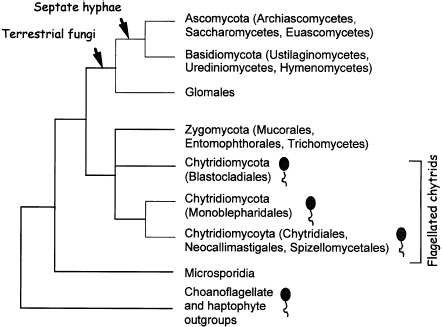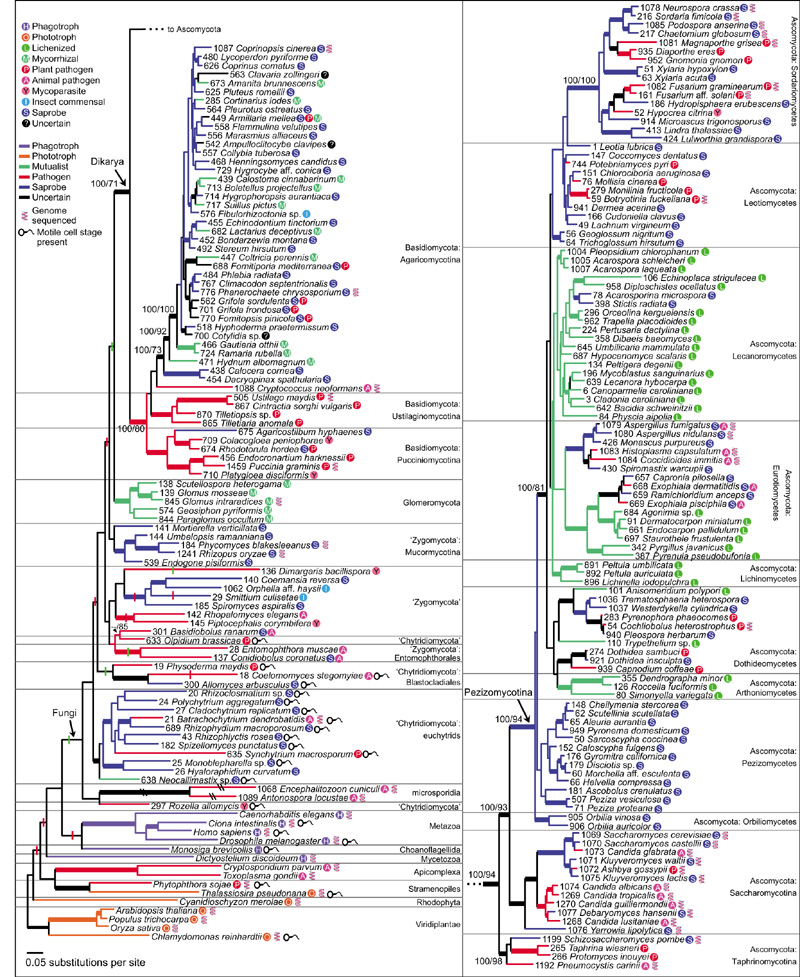Classification: In this vast universe, where does the Orange Peel Fungus stand?
The classification of fungi often presents a problem for scientists, especially because members of the kingdom are diverse on many different levels. To be more specific, scientists often focus on four components of fungi to distinguish between taxonomic groupings:
- Structural Features (What is the structure of the cell walls and organelles? What kinds of cells are involved in sexual and asexual reproduction?)
- Chemical Features (What is the chemical structure of the hyphae? What kinds of enzymes do the hyphae secrete? Are there differences among members of the same genus, etc., in terms of sequences of DNA and RNA?)
- Nutritional Features (Is the fungus parasitic or saprotrophic?)
- Sexuality (What kinds of life stages does the fungus exhibit? Which sexual lifestyle, sexual or asexual, is dominant? Are there haploid, diploid, and dikaryotic stages in the reproductive cycle?)
Specifically, the Orange Peel Fungus can be classified as follows:
- Domain: Eukarya
- Kingdom: Fungi
- Phylum: Ascomycota
- Class: Discomycetes
- Order: Pezizales
- Family: Pyronemataceae
- Genus: Aleuria
- Species: (Aleuria) aurantia (Fuckel, 1870) * **
The Orange Peel Fungus falls under the Domain Eukarya, and it possesses eukaryotic cells; it is a much more complex (multicellular) organism than the prokaryotes. Characteristics of eukaryotic cells include true nuclei, compartmentalization and specialization of cells and organelles, etc.
Aleuria aurantia resides in the Kingdom Fungi, and there are many interesting characteristics that set this kingdom apart. Fungi, for example, are multicellular, heterotrophic organisms. Although fungi exist in the habitats of plants, and they often form close associations with plants in the form of mycorrhizae, they are not autotrophic; they must acquire their nutrients through other organisms (parasitic fungi) or substrates (decomposition).

The Phylum Ascomycota is characterized by the formation of asci and ascospores. Asci are specialized fruiting bodies of the fungi, and reproductive stages occur in these structures. The asci of members of the Discomycetes are one-walled with pores or slits.
Fungi that fall into the Order Pezizales are classified according to the morphology of their septa. (Not all fungi specimens have septa). Septa are pores within cells of the asci that allow for increased intercellular flow of ribosomes, mitochondria, and even nuclei. In terms of reproduction, these structures are important in the process of karyogamy, or the fusing of two nuclei.
The family Pyronemataceae houses the most individual specimens of fungi under the order Pezizales. Previous information supporting the classification of organisms under this grouping is proving false; this grouping was previously thought to be monophyletic. In other words, all members of this grouping were thought to have a common ancestor. Apparently, more evidence is proving that this group is paraphyletic.
Another species in the genus Aleuria is Aleuria rhenana, which resembles the Orange Peel Fungus in its orange color scheme. Classification of species in this genus involves analyzing hyphal walls (unicellular), DNA, RNA, metabolic features, septal structures, etc.
To learn more about phylogenetics and fungi, click here.
*** Author's note: Although I could not find the English translation of Aleuria aurantia, it must be noted that the Orange Peel Fungus gets its (common) name from its morphologically distinct coloring. (Its ascocarp is bright-orange, and it resembles an orange peel.)
